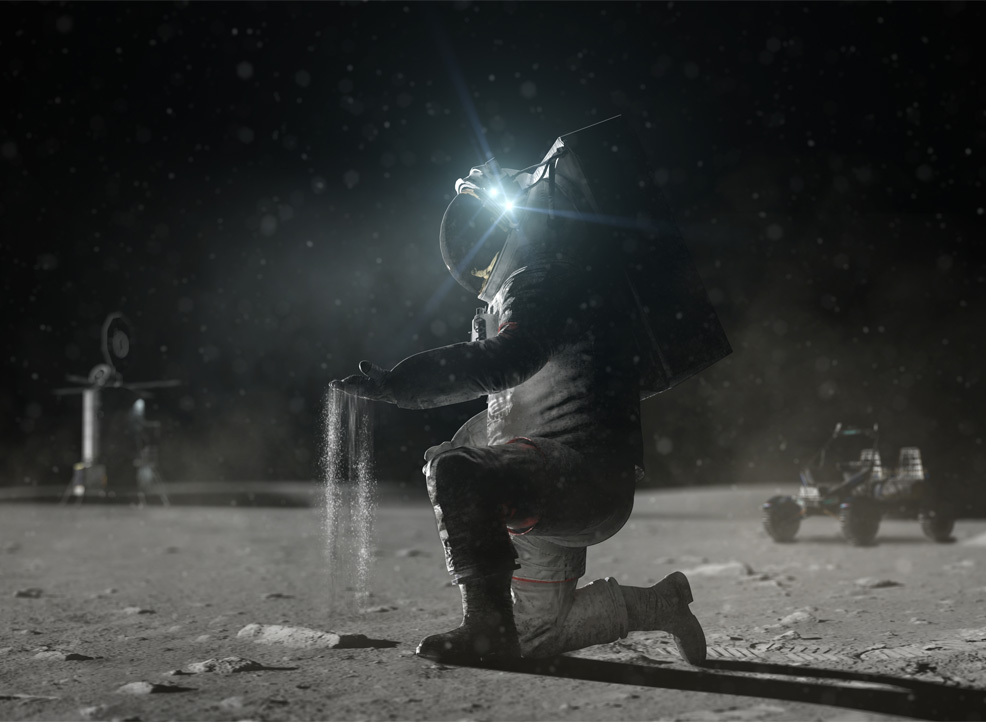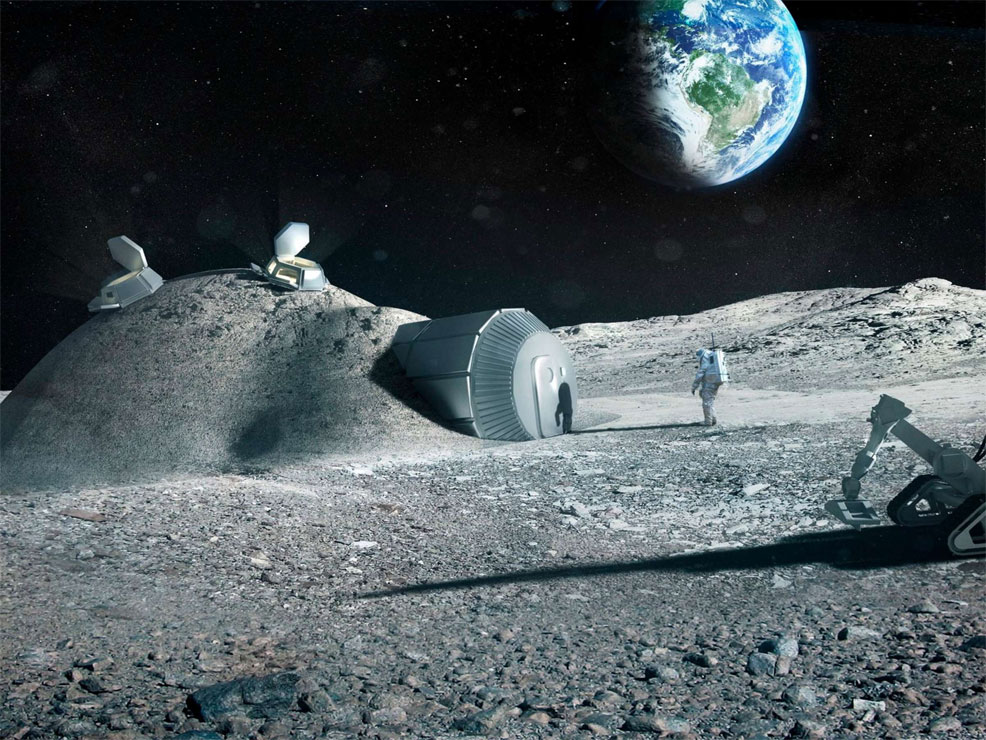
14th November 2020 New technology could turn Moon dust into oxygen and useful metals British firm Metalysis has won a European Space Agency contract to develop technology to turn Moon dust and rocks into oxygen, leaving behind aluminium, iron and other metal powders for useful construction materials.
Oxygen is among the most important resources needed for any permanent human settlement of the Moon – essential for life-supporting functions such as breathable air, food and water production, as well as being a vital component of rocket fuel. However, delivering large quantities of oxygen supplied from Earth to the Moon is hugely expensive. A much better, cheaper and sustainable long-term solution is to generate oxygen on site. A huge percentage of the lunar soil – about 43% – contains oxygen. The rest is composed of silicon, iron, calcium, aluminium and magnesium, with trace amounts of other materials. The European Space Agency (ESA) has just awarded funding to a UK engineering firm, Metalysis, to research a way of extracting these useful elements directly from the Moon's surface. The project, "Metalysis FFC Process for Extra-Terrestrial Oxygen Production from ISRU," forms part of ESA's Space Resources Strategy and could be incorporated into future missions to the Moon. In a study last year, Metalysis and the University of Glasgow found they could remove 96% of the oxygen from simulated lunar soil, leaving useful metal alloy powders behind. Their method, known as the FFC-Cambridge process, involved the electro-deoxidation of a simulant using a cathode and anode in molten salt (CaCl2) at temperatures of around 900°C (1,652°F). Approximately one-third of the total oxygen in the sample was detected in the off-gas, with the remaining oxygen being lost to corrosion of the reactor vessel. The new ESA contract will fund Metalysis for nine months. During this time, researchers will work to perfect their electrochemical process – not just creating by-products, but a system that captures and stores all of the oxygen, while also boosting the yield and purity of the metals, and reducing the energy required to do so.
Metalysis has already successfully scaled-up its technology for metals used in Earth-based industry, such as titanium and tantalum, as well as intermetallics of aluminium and scandium. The ability to use such a process in extra-terrestrial environments – such as the lunar surface, asteroid mining operations, or facilities based on Mars – could enable a whole new economy to develop throughout the Solar System. The ESA Space Resources Strategy estimates potential revenues of up to €170bn ($201bn) from extra-terrestrial resource harvesting by 2045. "Anything you take from Earth to the Moon is an added weight that you don't want to carry, so if you can make these materials in situ it saves you a lot of time, effort and money," said Ian Mellor, Managing Director at Metalysis' Technology & Materials Discovery Centre, a state of the art research facility in Sheffield, northern England. Metalysis will also be working alongside Added Value Solutions (AVS), a developer of hi-tech equipment for physics and space projects with operations in the U.S. and Europe including the UK. Researchers at AVS recently helped to develop two of the seven instruments on the Perseverance rover – wind sensors on its MEDA weather station, and a calibration target for its SuperCam. The two companies will collaborate to determine the steps required to translate the oxygen and metal extraction process from an on-Earth to extra-terrestrial environment. If the project is successful, this technology could in the near future be utilised by astronauts on the Moon, perhaps in combination with a 3D printing process to build new structures. Both NASA and ESA are aiming to establish a lunar base of some sort during the 2030s. "In the future, if we want to travel extensively in space and set up bases on the Moon and Mars, we will need to make or find the things required to support life – food, water and breathable air," said Sue Horne, Head of Space Exploration at the UK Space Agency. "The involvement of Metalysis in a programme that aims to do just that, by producing oxygen on a lunar setting, will showcase the UK's space credentials on the world stage and help unlock breakthroughs that bring future space exploration a step closer."
--- Follow us: Twitter | Facebook | Instagram | YouTube
Comments »
If you enjoyed this article, please consider sharing it:
|








